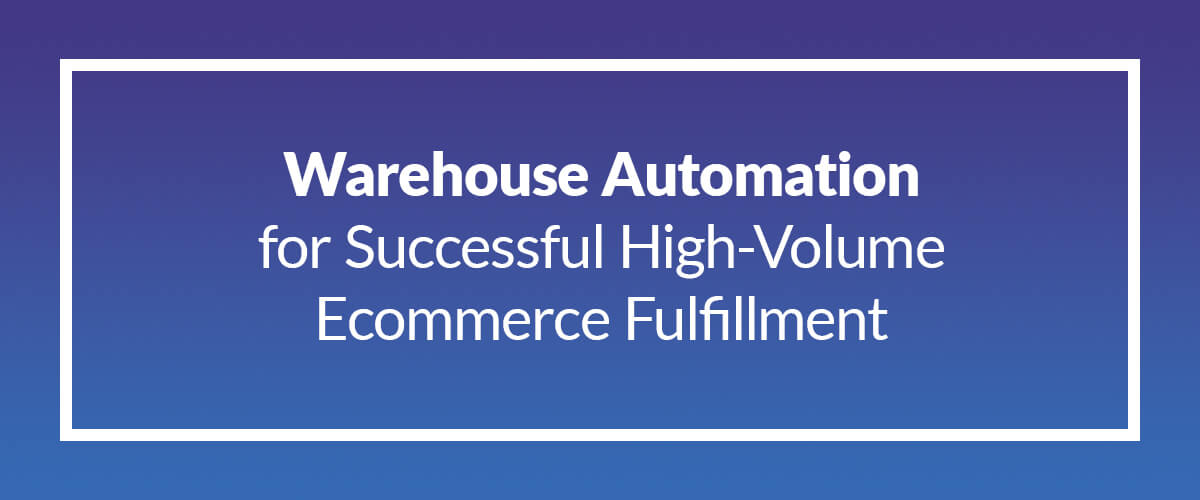In today’s fast-paced, technology-driven world, customers have come to expect quick and convenient experiences in all areas of their lives, especially online shopping. As a result, brands and 3PLs must keep pace with these ever-higher expectations to compete and succeed in DTC high-volume order fulfillment.
With these higher customer expectations in mind, intelligent automation is no longer a competitive advantage for high-volume DTC fulfillment operations. It’s now a competitive imperative, one that is being fueled by technological advancements, digital transformation and demand for increased customer convenience.
In this blog, we’ll help you understand:
Ecommerce Trends
Warehouse automation speeds up processes, improves efficiencies, reduces human errors and perhaps most importantly, saves both time and money. What’s more, it’s increasingly clear that ecommerce is here to stay and DTC ecommerce fulfillment businesses must plan for the long-term.
Recent research confirms the magnitude of this shift and the impact it will have by 2025:
-
- The global ecommerce market will increase from $5T in 2020 to $7.4T in 2025
- The WMS market will increase from $2.8B in 2021 to $6.1B in 2025
- The global parcel volume will increase from $158B in 2021 to $240B in 2025
To plan for the long-term, retailers must adopt intelligent automation and technology to substantially—and continually—reduce costs and improve accuracy, quality and convenience.
The Need for Intelligent Automation
Intelligent warehouse automation uses state-of-the-art software to execute vital fulfillment functions, boosting both the accuracy and efficiency of warehouse processes. Intelligent automation enables users in multiple locations to access customizable algorithms within their warehouse management system (WMS). This automates functions including shipping box suggestions, carrier rate shopping rules and order batching for smoother picking and packing processes.

The Rise of Robotics
One type of warehouse automation DTC fulfillment operators are increasingly utilizing is robotics. When running robotics within the warehouse, the WMS acts as the “brain,” directing robots to assist with inventory processes, including receiving, picking, packing, transfers and putaways. Robotics offers many benefits: reduced labor costs, increased warehouse safety and increased fulfillment accuracy. Robotics is also one of the best ways to scale operations.
Although it has been around for decades, warehouse employees often find it daunting. Therefore, to maximize their investment in robotics, companies must make time to help warehouse employees get comfortable with the new technology. This can be done via training, simulations and other best practices that make employees feel both comfortable and empowered.
Smart Order Routing
Another important automation tool for DTC high-volume fulfillment is smart order routing, a process that enables inventory management across multiple warehouses indifferent locations via one single system. With Smart Order Routing, users can essentially manage all inventory and warehouses with a few computer keyboard clicks.
Smart order routing is particularly beneficial for companies with multiple fulfillment centers. Even if you don’t have multiple warehouses today, it’s always best to plan for the future. By routing orders from your ecommerce channels to the best fulfillment warehouse—based on distance from the consumer placing the order— not only improves the bottom line but also helps provide a superior customer experience that features accurate, on time orders. It also helps expand your fulfillment network without sacrificing consistency.
This data-driven approach to smart order routing can also cut operational costs, while simultaneously ensuring your inventory is automatically balanced and your fulfillment network is seamlessly connected.
Collaboration is Key
For all of these elements to work together, it’s critical that the warehouse, robotics and WMS teams work together, which first requires an agreed-upon plan for the function of warehouse automation. Consistent, agreed-upon metrics are also critical.
Automating a warehouse can feel overwhelming, but you do not need to do it all at once. Instead, carefully consider your options and determine which would best integrate with your existing systems and which automation tools can best help you reach your business goals.
Today, ecommerce fulfillment requires automation to deliver a seamless process from start to finish. Adding automation to your digital supply chain will speed up processes, create efficiencies, reduce human error and save both time and money.
To learn more about Logiwa’s cloud-based fulfillment platform and automation capabilities, check out Logiwa’s Quicktake webinar 3 Keys to Warehouse Automation or schedule a demo.






